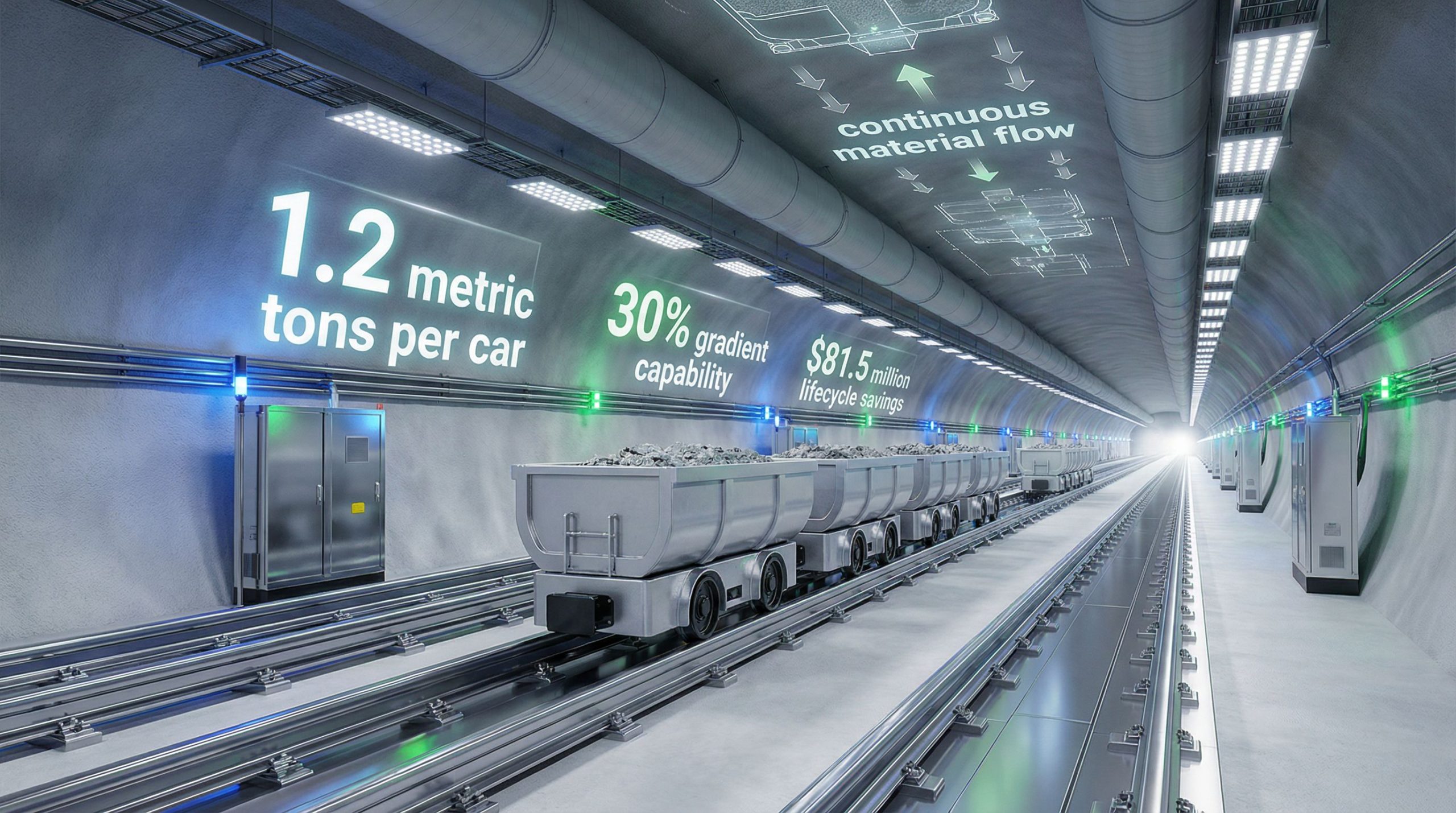Understanding the Strategic Framework Behind Critical Mineral Independence
The recently announced US-Australia rare earths agreement represents a fundamental shift in global resource strategy, marking the largest bilateral commitment for critical mineral development in modern history. This $8.5 billion partnership between the United States and Australia establishes a comprehensive framework designed to challenge existing supply chain dependencies and create alternative pathways for essential materials.
Unlike traditional trade agreements that focus primarily on tariff reductions or market access, this partnership integrates economic development with national security objectives. The agreement encompasses both immediate financial commitments and long-term infrastructure development, creating a multi-layered approach to resource independence that extends far beyond conventional mining partnerships.
Furthermore, this initiative directly supports Australia's broader critical minerals reserve strategy and aligns with recent policy developments including the executive order on critical minerals that has reshaped international cooperation frameworks.
What Makes This $8.5 Billion Agreement Unprecedented?
The scale and structure of this bilateral commitment distinguishes it from previous international mining collaborations. The agreement includes $1 billion in joint funding deployment within six months, demonstrating an urgency typically reserved for crisis response rather than long-term strategic planning.
This accelerated timeline reflects the critical nature of supply chain vulnerabilities that have become increasingly apparent. The partnership moves beyond traditional export-import relationships to establish integrated processing capabilities, shared technological development, and coordinated strategic reserves.
Key differentiators include:
- Integrated processing development rather than raw material extraction alone
- Joint technological advancement initiatives spanning both nations
- Coordinated strategic stockpiling mechanisms for supply security
- Defense sector integration linking economic and security objectives
How Does the Investment Structure Work?
The financial architecture of the US-Australia rare earths agreement operates through multiple channels designed to distribute risk while maximizing development speed. Government funding provides the foundation, while private sector participation scales the initiative beyond public sector capabilities alone.
The $1 billion six-month deployment serves as the initial catalyst, focusing on projects with existing infrastructure and regulatory approval. This rapid deployment strategy prioritizes shovel-ready initiatives while longer-term developments progress through planning and approval phases.
| Investment Category | Allocation | Timeline | Risk Profile |
|---|---|---|---|
| Government Direct Funding | $3.2 billion | 6 months – 2 years | Low |
| Private Co-Investment | $4.1 billion | 12 months – 5 years | Medium |
| Joint Technology Development | $1.2 billion | 2-7 years | High |
The Pentagon-backed gallium refinery in Western Australia exemplifies this integrated approach, combining defense requirements with commercial viability. This project represents the first major processing facility outside traditional supply chains, establishing a template for future developments.
Why Are Rare Earths Critical to Modern Economies?
The strategic importance of rare earth elements extends across virtually every advanced technology sector, creating dependencies that few alternatives can address. These materials function as the backbone of modern electronics, renewable energy systems, and defense applications, making supply security a matter of economic and national security.
In addition, the connection between rare earth supply and energy transition security has become increasingly apparent as nations pursue clean energy goals.
Which Industries Depend Most on These Materials?
Electronics manufacturing requires specific rare earth elements for components that cannot function with substitute materials. Neodymium and dysprosium are essential for high-performance magnets used in everything from smartphone speakers to industrial motors. Europium and terbium create the phosphors necessary for LED displays and energy-efficient lighting systems.
Electric vehicle production depends heavily on rare earth magnets for motor efficiency and battery performance. A typical electric vehicle contains approximately 2-5 kilograms of rare earth materials, primarily in permanent magnet motors that deliver the torque and efficiency characteristics essential for competitive performance.
Defense systems rely on rare earth elements for radar components, guidance systems, and advanced electronics. Military applications often require materials with extremely precise specifications, making alternative sourcing particularly challenging when supply chains face disruption.
What Are the Current Global Production Realities?
Global rare earth production remains highly concentrated, creating vulnerability for industries dependent on these materials. China controls approximately 85% of global rare earth processing capacity, despite holding only about 35% of known reserves.
Current annual production levels demonstrate this concentration:
| Country | Annual Production (tons) | Processing Capacity | Reserve Base |
|---|---|---|---|
| China | 240,000 | 85% global | 44 million tons |
| United States | 43,000 | 12% global | 1.4 million tons |
| Australia | 24,000 | 3% global | 4.2 million tons |
| Myanmar | 35,000 | Minimal | 1.0 million tons |
Australia possesses significant untapped potential, with reserve estimates suggesting capacity for substantially higher production levels once processing infrastructure develops. The Mount Weld deposit in Western Australia contains some of the world's highest-grade rare earth concentrations, offering economic advantages for large-scale development.
How Will This Partnership Reshape Mining Operations?
The transformation of mining operations under this partnership extends beyond traditional extraction to encompass the entire value chain, from exploration through final product delivery. This comprehensive approach addresses the historical pattern where raw materials travel thousands of miles for processing before returning as finished products.
What Processing Capabilities Will Be Developed?
Processing facility development represents the most significant departure from existing mining models. The Pentagon-backed gallium refinery in Western Australia will establish capabilities for producing defense-grade materials according to exact military specifications, reducing dependence on foreign processing.
Technology transfer frameworks between the nations will accelerate development timelines by sharing research, expertise, and specialised equipment designs. Joint research initiatives focus on improving separation techniques, reducing environmental impacts, and developing new applications for rare earth materials.
Key processing developments include:
- Advanced separation technologies for higher purity materials
- Recycling capabilities to recover rare earths from electronic waste
- Specialised refining equipment for defense applications
- Quality control systems meeting international standards
Which Projects Are Already in the Pipeline?
Multiple projects across both nations are positioned for rapid development under the partnership framework. The gallium refinery represents immediate progress, with site preparation and equipment procurement already underway. This facility will produce materials essential for semiconductor manufacturing and defense electronics.
However, the US-Australia strategic partnership is being closely watched by analysts who note that such agreements have historically faced implementation challenges.
Potential collaboration with Japan adds a third dimension to the partnership, leveraging Japanese expertise in electronics manufacturing and materials science. Japanese companies possess advanced technologies for rare earth magnet production and recycling, creating opportunities for triangular cooperation.
Mining expansion targets through 2026 focus on deposits with established resource bases and existing environmental approvals. Processing capacity development milestones are structured to create redundancy across multiple facilities, reducing single-point-of-failure risks.
What Triggered This Strategic Response?
The urgency behind this partnership stems from increasingly restrictive export policies that have disrupted global supply chains and highlighted the risks of concentrated sourcing. Beijing's tightening of rare earth export controls has created market volatility and supply uncertainty that extends far beyond immediate price impacts.
How Have China's Export Controls Impacted Markets?
Recent export control measures have created significant disruptions in industries dependent on rare earth materials. These restrictions operate through export licence requirements, quota systems, and quality inspections that can delay or prevent material shipments.
Market disruption extends beyond immediate supply shortages to include price volatility that complicates long-term planning. Companies face uncertainty about future availability, forcing them to maintain larger inventories and seek alternative suppliers despite higher costs.
Timeline of significant export control measures:
- 2020-2021: Enhanced licensing requirements for military-related applications
- 2022-2023: Expanded controls covering semiconductor materials
- 2024-2025: Additional restrictions on processing technology exports
Why Is Supply Chain Diversification Urgent?
The concentration of critical mineral processing creates systemic risks that extend beyond individual companies or industries to threaten entire economic sectors and national security capabilities.
Single-source dependency risks become apparent during geopolitical tensions when supply access faces potential disruption. Defense contractors particularly face challenges when critical materials for weapons systems or surveillance equipment become unavailable or unreliable.
Supply chain vulnerability assessments reveal that many industries lack viable alternatives for rare earth materials, making diversification essential rather than optional. The development timeline for new processing facilities typically spans 5-7 years, creating urgency for immediate action on long-term supply security.
How Will Strategic Stockpiling Work?
Strategic stockpiling represents a fundamental shift from just-in-time supply models toward buffer capacity designed to maintain operations during supply disruptions. This approach mirrors strategic petroleum reserves but addresses materials with more complex storage requirements and quality considerations.
This strategic approach complements the broader defence critical minerals supply chain initiative and forms part of a comprehensive defence materials strategy.
What Does the Reserve System Look Like?
The reserve system will establish physically distributed stockpiles across both nations, creating redundancy against localised disruptions while maintaining quality through controlled storage conditions. Buffer capacity calculations consider both routine supply variations and potential extended disruptions.
Storage requirements for rare earth materials present unique challenges due to oxidation sensitivity and purity maintenance needs. Specialised facilities must provide climate control, contamination prevention, and regular quality testing to ensure materials remain suitable for critical applications.
Strategic release mechanisms will operate through predetermined triggers based on supply availability, price levels, and national security assessments. These protocols ensure stockpile materials serve their intended purpose while avoiding market manipulation concerns.
How Does This Compare to Traditional Supply Models?
Traditional supply models prioritise cost minimisation through lean inventory management and single-source procurement. The strategic stockpiling approach accepts higher carrying costs to achieve supply security and reduce vulnerability to external disruption.
Risk mitigation through diversified storage creates operational complexity but provides insurance against catastrophic supply failure. Emergency access protocols enable rapid deployment of stockpiled materials when commercial supply chains face disruption.
Quality control and inventory management protocols ensure stockpiled materials maintain specifications over extended storage periods. Regular rotation and testing programs prevent degradation while maintaining fresh inventory.
What Are the Economic Implications?
The economic impact of this partnership extends across multiple sectors and timeframes, creating both immediate opportunities and long-term structural changes. Market dynamics will shift as alternative supply sources develop, potentially ending the monopolistic pricing power of concentrated suppliers.
How Will This Affect Global Pricing?
Price floor mechanisms built into the agreement will provide stability for producers while ensuring reasonable costs for consumers. These mechanisms protect against predatory pricing designed to eliminate competition while preventing excessive price spikes during supply shortages.
Competition effects on existing market dominance may initially increase costs as alternative suppliers develop economies of scale. However, long-term cost structures should benefit from competitive pressure and technological improvements driven by increased investment.
Investment return projections for stakeholders depend on successful execution of processing facility development and market share capture from existing suppliers. Early investors in processing capabilities may achieve substantial returns as supply diversification creates premium valuations for alternative sources.
Which Sectors Will Benefit Most?
Domestic manufacturing advantages will accrue to industries able to access secure, local supply sources rather than navigating international supply chains subject to disruption. Technology companies particularly benefit from supply certainty enabling long-term product development planning.
Defense contractors will gain stability improvements through guaranteed access to materials essential for weapons systems and surveillance equipment. Clean energy sector development receives support through reliable magnet materials for wind turbines and electric vehicle motors.
Sectors positioned for maximum benefit include:
- Electronics manufacturing with shortened supply chains
- Automotive industry with secure battery and motor materials
- Renewable energy development through reliable component supply
- Defence manufacturing with guaranteed material access
What Does This Mean for Australia's Mining Future?
Australia's mining sector faces transformation from raw material extraction toward value-added processing and manufacturing. This evolution positions the nation to capture significantly more value from its mineral resources while developing technological capabilities previously concentrated in other regions.
How Will Processing Capabilities Expand?
The movement beyond raw material extraction requires substantial infrastructure investment and workforce development. Processing facilities demand different skills, technologies, and environmental management approaches compared to traditional mining operations.
Value-added manufacturing development will create industrial clusters around processing facilities, attracting related industries and supporting services. This industrial ecosystem approach maximises economic benefits while creating sustainable regional development opportunities.
Skilled workforce requirements span multiple disciplines including chemical engineering, materials science, and advanced manufacturing. Training programs will need to develop capabilities not previously required in traditional mining regions.
What Are the Regional Development Opportunities?
Western Australia's industrial growth potential centres on existing mining infrastructure that can support processing facility development. Established transportation, power, and water systems reduce development costs while proximity to ore sources minimises logistics complexity.
Job creation projections extend beyond direct processing employment to include supporting industries, research facilities, and service providers. Regional economic multiplier effects may generate 3-4 indirect jobs for each direct processing position.
Technology hub development possibilities emerge as processing capabilities attract research institutions, equipment manufacturers, and speciality service providers. These clusters often generate innovation spillovers benefiting multiple industries.
How Does This Connect to Broader Defence Strategy?
The integration of resource security with defence strategy reflects recognition that economic and military security are inseparable in modern warfare. Access to critical materials for advanced weapons systems, communications equipment, and surveillance technologies directly impacts defensive capabilities.
What Role Does AUKUS Play?
The AUKUS partnership provides the strategic framework connecting resource security with advanced defence capabilities. Nuclear submarine development requires materials with extreme performance specifications, making supply chain security essential for program success.
Integrated defence technology development spans multiple nations but requires assured access to specialised materials. The rare earth partnership supports AUKUS objectives by ensuring critical materials remain available regardless of geopolitical tensions.
Alliance strengthening through resource security creates interdependence that reinforces political and military cooperation. Shared vulnerability and mutual dependence often prove more durable than formal treaty obligations alone.
How Will Defence Applications Benefit?
Radar system components require rare earth materials with precise electromagnetic properties that alternatives cannot match. Supply security for these materials ensures defensive capabilities remain operational during potential conflicts when commercial supply chains might face disruption.
Cruise missile technology depends on guidance systems incorporating rare earth elements for navigation and target acquisition. Advanced electronics for military systems increasingly rely on materials with specifications that only a few suppliers worldwide can meet.
Strategic autonomy in critical technologies requires domestic access to essential materials rather than dependence on potentially hostile suppliers. The partnership creates this autonomy while sharing costs and risks between allied nations.
What Challenges Could Emerge?
Implementation of such an ambitious partnership faces multiple potential obstacles, from technical complexity to market dynamics and international relations. Understanding these challenges enables proactive planning to address problems before they derail progress.
What Are the Implementation Risks?
Timeline pressures for rapid deployment may compromise quality or safety considerations in the rush to establish alternative supply sources. The six-month timeline for initial funding deployment allows little margin for unexpected complications or regulatory delays.
Technical complexity of processing development requires expertise that may be scarce, particularly for specialised applications like defence-grade materials. Scaling up from laboratory processes to industrial production often reveals unforeseen challenges that delay timelines and increase costs.
Recent examples from international mining partnerships illustrate potential pitfalls. Anglo American and Arc Minerals recently ended their copper and cobalt exploration partnership in Zambia after the joint venture stalled for a year with no drilling activity. This termination, despite initial optimism and approximately $800,000 remaining in the project account, demonstrates how global miners face significant challenges when seeking to revive mining regions amid shifting investment conditions.
Market volatility during transition periods may create financial stress for companies investing in new processing capabilities. Coordination challenges between governments often slow decision-making and create regulatory uncertainty that discourages private investment.
How Might China Respond?
Potential responses from existing suppliers may include further export restrictions designed to increase costs for alternative supply chains. Market competition intensification could involve predatory pricing aimed at making alternative suppliers uneconomical.
Alternative partnership development with other nations might create competing supply chains, fragmenting global markets and increasing complexity for end users. Diplomatic relationship impacts may extend beyond trade to affect broader international cooperation.
However, market diversification ultimately benefits global stability by reducing single-source dependencies that create systemic risks for all participants in the global economy.
What's the Timeline for Results?
The ambitious timeline for this partnership reflects both the urgency of supply chain vulnerabilities and the availability of projects ready for rapid development. Success depends on executing multiple complex projects simultaneously while maintaining quality and safety standards.
When Will Processing Capabilities Come Online?
The six-month timeline for initial $1 billion investment deployment focuses on projects with existing environmental approvals and available infrastructure. These ready-to-proceed initiatives will provide early supply while longer-term developments progress through planning phases.
The Pentagon-backed gallium refinery in Western Australia represents one of the most advanced projects, with site selection and preliminary engineering already underway. Production from this facility could begin within 18-24 months of full funding commitment.
Expanded capacity targets for 2026 depend on successful completion of multiple processing facilities across both nations. Performance milestone tracking will monitor progress against established benchmarks while identifying potential delays or complications early in the development process.
How Will Success Be Measured?
Production volume achievements will provide quantifiable metrics for partnership success, measured against current import levels and projected demand growth. Supply chain resilience metrics will assess the system's ability to maintain operations during various disruption scenarios.
Economic return assessments must balance immediate costs against long-term benefits including supply security, price stability, and industrial development. Strategic independence indicators will measure progress toward reduced dependence on potentially unreliable suppliers.
Key performance indicators include:
- Processing capacity as percentage of domestic demand
- Supply disruption response time during test scenarios
- Cost competitiveness compared to existing supply sources
- Quality specifications meeting defence and commercial requirements
Critical Success Factors and Potential Obstacles
The success of this unprecedented partnership depends on numerous factors aligning simultaneously, from technological development to market conditions and international relations. Understanding these dependencies enables better risk management and contingency planning.
What Technical Barriers Must Be Overcome?
Processing technology for rare earth separation and purification requires specialised expertise and equipment that few suppliers worldwide provide. Scaling laboratory processes to industrial production often reveals unexpected complications that can delay timelines and increase costs significantly.
Environmental management for rare earth processing presents particular challenges due to radioactive materials often associated with these deposits. Regulatory approval processes for new facilities may extend longer than anticipated, particularly for processing technologies not previously implemented in either nation.
Quality control systems must meet specifications for defence applications that exceed commercial requirements. These stringent standards may require additional investment in testing equipment and specialised personnel training.
How Will Market Dynamics Affect Success?
Global commodity market conditions will influence the partnership's economic viability throughout its development timeline. Recent market volatility demonstrates the unpredictable nature of these conditions, as evidenced by copper prices reaching near-record levels at $10,691 per ton on the London Metal Exchange and $11,130 per ton on COMEX futures.
Competition from established suppliers may intensify as alternative supply sources threaten existing market positions. Price competition could make new processing facilities uneconomical unless government support mechanisms provide adequate protection during development phases.
Demand projections for rare earth materials depend on continued growth in electronics, electric vehicles, and renewable energy systems. Economic downturns or technological substitutions could reduce demand below levels necessary to support expanded processing capacity.
Long-Term Strategic Implications
This partnership establishes precedents that may influence global resource strategies for decades. The integration of economic development with national security objectives creates a model that other nations may adopt for their own critical material dependencies.
What Does This Mean for Global Resource Strategy?
The shift toward trusted supplier networks represents a fundamental change from purely cost-based procurement decisions. Nations increasingly prioritise supply security and political reliability alongside economic considerations when developing long-term resource strategies.
Precedent setting for other bilateral partnerships may lead to competing regional blocs rather than integrated global supply chains. These developments could increase costs and complexity while reducing overall efficiency of global resource allocation.
Integration of economic and security objectives creates interdependencies that strengthen alliance relationships but may also limit flexibility in international relations. Partners in critical material supply chains often find their foreign policies constrained by resource security considerations.
The Path Forward for Supply Chain Independence
Implementation success factors include maintaining political commitment across election cycles, achieving technical milestones on schedule, and managing market conditions during the transition period. Coordination between multiple government agencies and private sector partners requires sustained leadership and clear communication.
Expansion possibilities to other critical materials may follow if the rare earth partnership achieves its objectives. Materials like lithium, cobalt, and speciality metals face similar concentration risks that could benefit from diversification strategies.
The US-Australia rare earths agreement represents more than a bilateral trade arrangement. It establishes a new model for resource security that prioritises strategic independence alongside economic efficiency. Success will depend on executing complex technical projects while managing market dynamics and international relations. Furthermore, this US-Australia agreement represents a significant shift in how nations approach critical mineral security, as the partnership's ultimate impact may extend far beyond rare earth supply chains to influence global approaches to critical material security for decades to come.
Disclaimer: This analysis is based on publicly available information and should not be considered investment advice. Projections and timelines are subject to change based on market conditions, technical challenges, and political developments. Readers should consult qualified professionals before making investment decisions related to rare earth materials or mining operations.
Ready to Capitalise on Critical Mineral Investment Opportunities?
Discovery Alert's proprietary Discovery IQ model delivers real-time alerts on significant critical mineral discoveries across the ASX, instantly empowering subscribers to identify actionable opportunities ahead of the broader market. Begin your 30-day free trial today and position yourself to benefit from the strategic shifts in global mineral supply chains.




